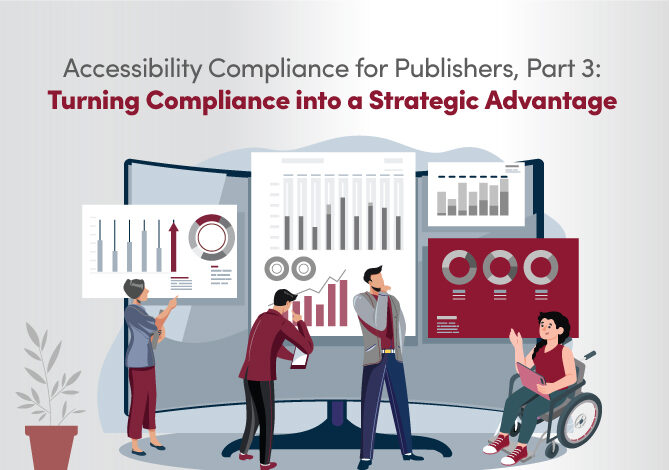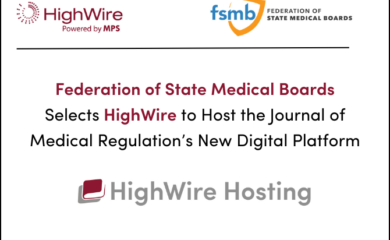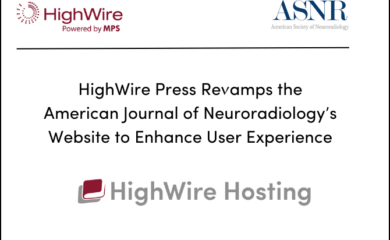This is a three-part series that explores how scholarly and educational publishers can prepare for accessibility compliance under the European Accessibility Act (EAA) and ADA Title II. Drawing from expert insights shared during the HighWire webinar, each part offers practical guidance—from understanding regulations, to building accessible workflows, to positioning accessibility as a strategic advantage.
Together, these articles provide a roadmap for creating inclusive, future-ready publishing practices.
While compliance deadlines serve as an important catalyst, the real opportunity in accessibility lies beyond regulatory checklists.
In this final article of the series, we examine how publishers can leverage accessibility to drive innovation, enhance market reach, and future-proof their digital strategies, transforming inclusion into a lasting competitive advantage.
Accessibility: A Business Imperative, Not Just a Legal Obligation
Historically, accessibility efforts were often framed as reactive measures — responses to legal risk or market pressure.
Today, forward-thinking publishers recognize that accessibility strengthens every dimension of their business:
- Expanding Market Reach:An estimated 1 billion people globally live with some form of disability. Beyond that, accessibility features such as flexible text sizing, keyboard navigation, and alternative text benefit a far wider audience, including aging populations and neurodiverse users.
- Driving Institutional Demand:Public institutions — universities, libraries, government agencies — increasingly require vendors to meet accessibility standards before purchasing. Accessibility is not just an ethical differentiator; it is a commercial necessity.
- Enhancing Brand Reputation:Organizations known for prioritizing inclusion earn trust, loyalty, and positive brand association. In an increasingly values-driven market, demonstrating real commitment to accessibility matters.
- Future-proofing Digital Products:Digital platforms and technologies evolve rapidly. Building accessibility into the foundation ensures resilience against future regulatory updates and changing user expectations.
As Stacy Scott from Taylor & Francis emphasized in the webinar: accessible content is better content — for everyone.
Real Inclusion: Designing for All Users
True accessibility is not about creating separate or secondary experiences. It is about making mainstream products inherently usable by a diverse range of people.
When publishers design content with accessibility in mind, they create materials that are:
- Easier to navigate
- More flexible across devices and assistive technologies
- Clearer in structure and meaning
- More discoverable via metadata and search engines
These improvements serve readers with disabilities — and at the same time, they improve usability for the broader public.
As Rachel Comerford from Macmillan Learning noted, accessibility solutions often benefit users without disabilities, too.
Good accessibility practices enhance overall product quality, much like good editing or thoughtful design.
The Evolving Role of Technology and AI
Technology offers powerful tools to accelerate accessibility efforts — but it is not a complete solution.
Many publishers are already leveraging:
- AI-driven image description tools to generate draft descriptions for backlist remediation.
- Automated accessibility checkers (like ACE by DAISY) for EPUB validation.
- Accessible e-reader platforms (like Thorium) to test real user experiences.
However, the consistent message across the webinar was clear:
Technology must be combined with human judgment.
Automated tools can detect missing alt text, but they cannot determine whether a description conveys meaningful information. AI can propose captions, but human reviewers must ensure accuracy, relevance, and respect.
As accessibility standards evolve, publishers must embrace a hybrid approach — using technology to scale efforts while maintaining human oversight to safeguard quality.
Building Accessibility into Organizational Culture
The most successful publishers treat accessibility not as a compliance project, but as an organizational value.
Practical steps include:
- Establishing internal accessibility working groups, bringing together colleagues from editorial, production, sales, marketing, and technology teams.
- Training teams on accessibility principles, tailored to their roles (e.g., editors focusing on language and heading structure; production teams on semantic markup).
- Embedding accessibility into author guidelines and vendor contracts.
- Documenting accessibility strategies and progress publicly, strengthening transparency and accountability.
An inclusive culture ensures that accessibility remains a priority even as staff, systems, and standards evolve.
As emphasized by multiple speakers, success comes not from isolated efforts, but from shared ownership.
From Compliance to Leadership
The journey to accessibility compliance is not without challenges.
It requires investment, collaboration, and a willingness to change established practices.
But for publishers willing to commit, accessibility offers a path to something far greater than regulatory satisfaction.
It offers the chance to lead — to create knowledge resources that are truly open, equitable, and future-ready.
Accessibility is no longer optional.
It is an essential dimension of excellence in scholarly publishing — and a powerful foundation for innovation, reputation, and growth.
– By Tony Alves
Read the next part



